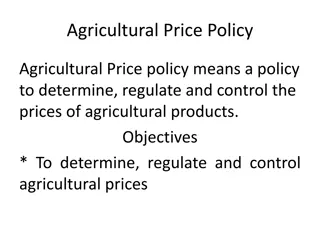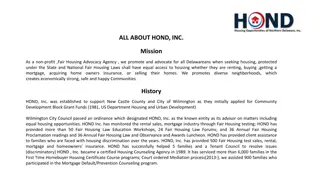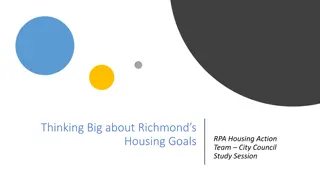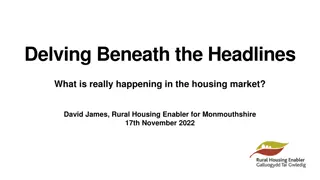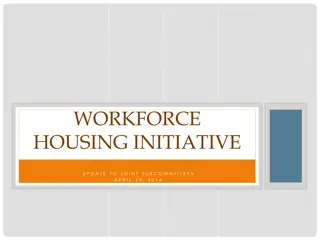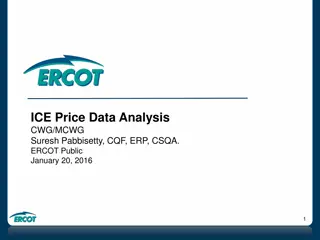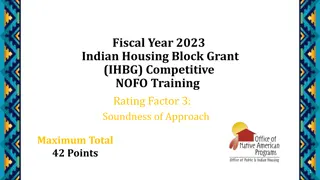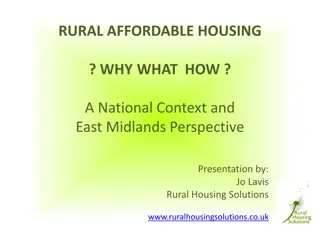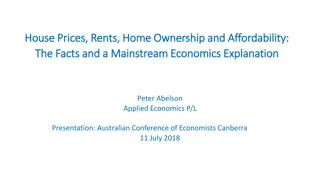Dynamics of House Prices in the US Housing Market
This study explores the dynamics of house prices in the US housing market, focusing on the presence of bubbles and their impact on price movements. Using data from 1975 to 2006, the research examines the historical trends of boom and bust cycles, measures bubbles through percentage changes in median house prices, and assesses deviations from equilibrium house price-to-income ratios. The analysis involves state-level data and regression models to understand the factors influencing house price dynamics and bubble formations.
Download Presentation

Please find below an Image/Link to download the presentation.
The content on the website is provided AS IS for your information and personal use only. It may not be sold, licensed, or shared on other websites without obtaining consent from the author.If you encounter any issues during the download, it is possible that the publisher has removed the file from their server.
You are allowed to download the files provided on this website for personal or commercial use, subject to the condition that they are used lawfully. All files are the property of their respective owners.
The content on the website is provided AS IS for your information and personal use only. It may not be sold, licensed, or shared on other websites without obtaining consent from the author.
E N D
Presentation Transcript
A Study of the House Price Dynamics with Bubble: Evidence of U.S. Housing Markets Park, Sae Woon Changwon National University 1
Research Motives 1.US housing market has been subject to two long and sustained cycles of boom and bust in recent years: first boom in the 1980 s and the subsequent crash in the early part of 1990 and the second boom from the mid-1990 s to about 2006 and the corresponding crash still under progress. 2
2. First, since the housing markets in the US are already overheated by the end of 2003, we assume that the subsequent rapid price escalation represents the bubble. Therefore, we measure the bubble using percentage changes in median house prices for the 2004:1 to 2006:2 period. 3
Next , we assume that house prices are a sum of multiples of income and a bubble, we measure bubble using the deviation from equilibrium house price-to-income ratios. We estimate the deviation from the equilibrium house price-to-income ratio at a state level from 1985:1 to 2006:2 where we use the US long run average price-to- income ratios and the state long-run price- to-income ratio as the equilibrium house price-to-income ratio. 4
. Prior researches(Abraham and Hendershott 1996, Case and Shiller 2003) are limited to the units of MSA or cities in USA. The subjects of this paper are states. 5
Data OFHEO house price index Population Total household income Construction cost index Unemployment rate Mortgage rates Volume of subprime mortgage loans Period : 1975~2006 (quarterly) 6
OLS model estimation Of the house price changes of the 50 US states for the subperiod 2006:2-2008:3 as a function of those for the subperiod 2004:1-2006:2 Variables percentage changes in the median house prices (2006:2-2008:3) constant 7.46 (3.17) Percentage changes In the median house prices -0.26 (-3.39) (2004:1-2006:2) R squared 0.19 7
The OLS model of the subsequent price drop (bubble burst) as a function of the deviation of the PIR (bubble) using 50 US States Model 1 deviation from state average PIR -0.12 (-3.30) a (1985:1 2006:2) Constant 0.19 (2.91) a R-squared 0.18 adj R-squared 0.16 Model 2 deviation from US average PIR -0.06 (-2.81) a (1985:1-2006:2) Constant 0.15 (2.37) b R-squared 0.14 adj R-squared 0.12 8
The OLS model of the subsequent house price changes as a function of the R2 of the house price momentum across the 50 U.S. states(1985:1-2006:2) Model 1 R2 of price momentum variables -17.147 (-2.23) b Constant 5.033 (2.110) b R2 0.092 adjusted R2 0.073 Model 2 R2 of price fundamental variables 1.377(0.120) Constant 0.142(0.050) R2 0.000 adjusted R2 - 0.020 9
Findings 1. States with a larger bubble experience a larger subsequent price downfall. : Arizona, California, Florida, Nevada 2. House price bubble is quite widespread, but confined to 3-4 geographically adjacent regions. 3.Excessive liquidity by subprime mortgages & speculative activity by the variation of house prices cause the bubble formation and subsequent burst. 10
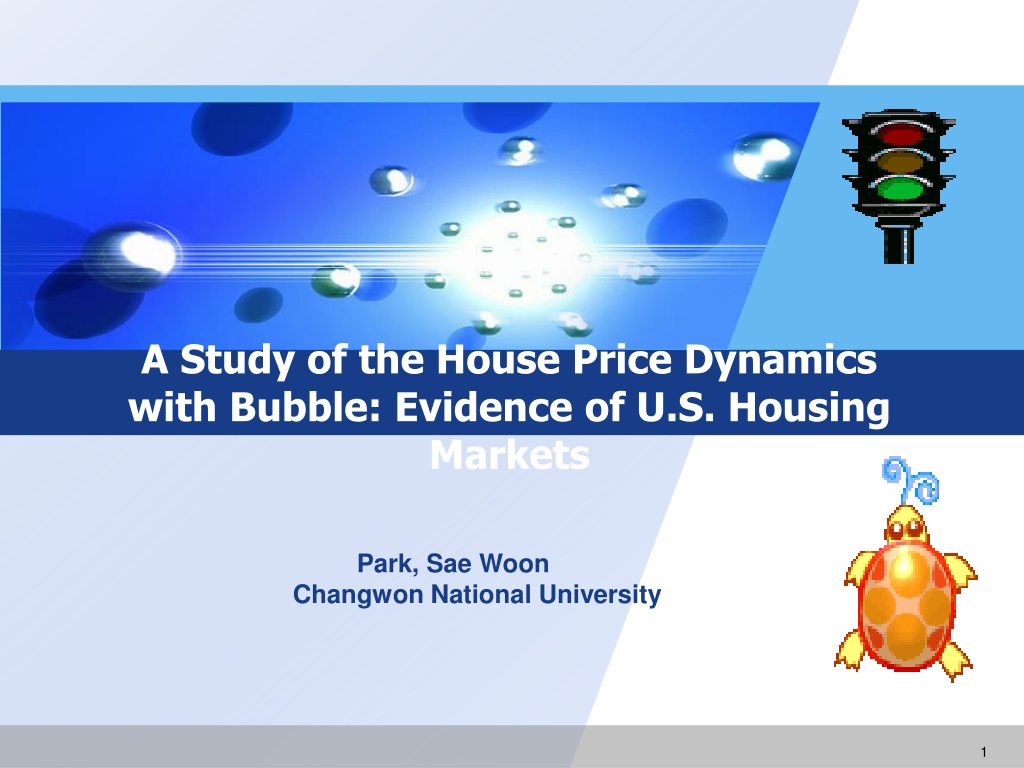
 undefined
undefined












